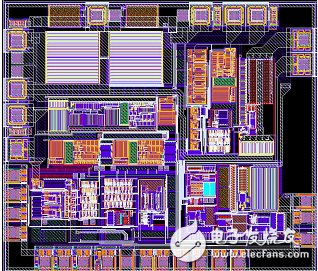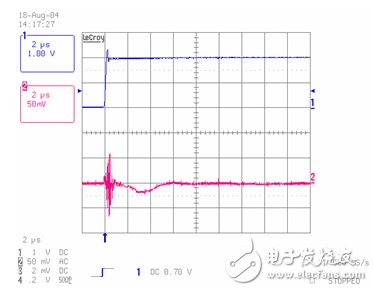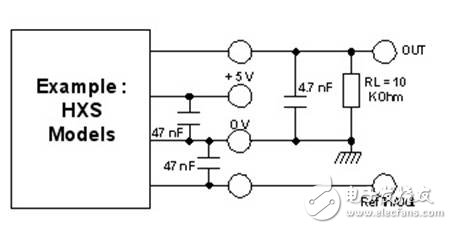The market development trend of the power electronics industry places demands on the application of special components. The same is true for current measurements. Basically, in order to obtain a certain measurement accuracy, it is required that the component has a corresponding size and a corresponding cost. This article describes a new generation of current sensors that use a specially developed ASIC technology to achieve improved performance of current sensors based on open-loop Hall effect. We currently have a number of Hall-ASIC sensors available on the market that we can use to measure position, magnetic field and current. Most of these ASIC sensors are used for accurate and fast current measurements, such as the power electronics industry, which have the advantage of high immunity to electromagnetic interference. This foundation has led to the development of new integrated components that are particularly well suited to these needs (Figure 1). Based on CMOS technology, the new integrated component combines all the components of an open-loop Hall-effect current sensor structure on a single chip. The Hall array acts as a measurement component followed by an amplifier stage and an extended programming unit and a stable bandgap reference voltage. This component has the following characteristics: 5V power supply Large measurement range from 0.5 to 4 mV / Gauss Deviation and gain can be programmed (proportional or fixed) Reference input/output Programmable temperature compensation Wiring pins have short circuit and electrostatic discharge (ESD) protection Temperatures range from -40 ° C to + 125 ° C. The reference voltage as a measured zero point can be programmed during the production process. It can supply half of the supply voltage or a fixed 2.5V voltage. A reference voltage can also be supplied to the external pins. For example, the reference voltage can be applied at any time via a current external reference voltage from the A/D converter via a 200Ω internal load impedance. parameter The speed of the transient current is almost unchanged compared to conventional Hall elements. The delay time after a transient current with a current change rate (di/dt) of 100 A/*s is approximately 4 μs, as shown in FIG. This delay time is sufficient for current circuit short cuts and adjustments. A somewhat longer delay can be explained by the chopper technique of the Hall chip, which is used to improve the drift parameters. One of the key parameters for sensors used in high EMC environments is performance after voltage hopping (common mode). Figure 3 shows the current change rate (dV/dt) for 6 KV/*s, and gives the state after skipping a deviation when the output is about 20 mV. This result is related to the drift of 3% of the nominal value. Consistent. The performance is balanced so that it can be externally or internally filtered without bias. Due to the stability of the chopping, the noise at the sensor output is increased by a factor of three compared to conventional Hall elements. Typically, this noise is approximately 10 m/Vpp, which corresponds to approximately 1.4% of the nominal output current. Due to the high noise frequency of 500KHz, this noise does not affect the normal application. For ultra-fast current regulation circuits with high bandwidth, this parameter should be taken into account. In terms of temperature drift (a basic parameter for current sensors), maximum improvement can be achieved by comparison with conventional solutions. Deviation drift and gain drift have been improved by a factor of more than 2 compared to conventional sensors. When the temperature rises by 50 ° C, the deviation drift reaches a maximum value of 1.6% of the maximum nominal value. Gain drift, defined as a percentage of the measured value, can reach 2% in the worst case. These values ​​are excellent values ​​for open-loop Hall-effect current sensors. The sensor mounted on the printed circuit board should be as close as possible to the decoupling capacitor. These capacitors have a significant effect on the improvement of EMC characteristics. Figure 4 shows a wiring diagram with values ​​actually found during the measurement process. However, this wiring will vary slightly depending on the application. This reference voltage should have the same value as the supply voltage. Various suitable design options With this ASIC technology, we have developed four new range of open-loop Hall-effect current sensors for a variety of applications. During the development of the sensor, we paid special attention to the requirements of the applications covered, the mechanical aspects and the separation and insulation requirements for electrical components and electronic components. For example, in a battery-powered vehicle, we have also developed a special sensor for low voltage applications up to 100V for the first time. HXS The smallest design model used to measure current from 50A nominal to 150A measurement range. This type of sensor has 4 rows of main bus bars that can be connected in parallel or in series and enables the component to cover 3 measurement ranges. This model range includes six different sensors for a variety of applications, with different current ranges, various temperature ranges, and core materials. A sensor for long shielded conductors and capacitive currents associated with these conductors has been developed in particular. Therefore, core heating due to high frequency loss is eliminated. This sensor is especially suitable for frequency converters, power supplies and small UPS units. HAIS This model covers a current range of 50-400A (600A). Meets the requirements for safe operation up to 600V nominal voltage (overvoltage category III, pollution degree 2). The main opening accommodates bus bars up to 15 x 8 mm in cross section. For fixing to a printed circuit board, two additional solder pins are provided, which can also be used to improve EMC characteristics when grounded. HTFS Thanks to the 22mm opening, the sensor is suitable for cables and bus bars. It is also possible to provide a measurement range of up to 1200A. The sensor has extremely robust mechanical properties and can be attached to the printed circuit board with solder pins or screws. The sensor is especially suitable for battery-powered vehicles such as forklifts or hybrid excavators. For the first time, it is possible to record currents exceeding 1000 A through this small design. HFIS These sensors have been further used in the industrial field since the current research and development of current sensors for various applications in the automotive field. In order to achieve a compact design, the main opening is set very small. This type of sensor is therefore suitable for a wide range of applications with low constant current and high measurement range. Moreover, this type of sensor meets the safety isolation requirements of only up to 100V. Applications include switching networks with low peak currents and battery-powered vehicle components such as wheelchairs and golf clubs. in conclusion We offer several design models to our customers, depending on the application. Since only a single component is used, these design models have one thing in common, which is a high operating utilization with a good mean time between failures (MTBF). In order to eliminate the sources of error that may eventually exist in production, the Six Sigma tool was used in the development process. According to European EMC standards, all components have an EC mark and are safely isolated. All types of sensors will be UL listed. All sensors comply with the European RoHS Directive, which came into effect on July 1, 2006.
TECHNOLOGY
WHAT IS AN Air Purifier?
Breathing clean air is very important.
It is scientifically proven that the air in our homes contains allergens(pollen ,mites ,moulds ,etc ).
noxious substance, bacteria viruses and suspended smells.
We have the solution for it!
Silent mode for peaceful sleep
Removes Allergens & Germs
Like pollen , dust , dander , smoke , pollution , viruses , bacteria and mold spores
UVC lamp ----using UV lamp to kill viruses
Room Air Purifier,Auto Silent Air Cleaner,Big Air Purifier,Easy Operate For Air Purifier Ningbo Zhe Kai Electric Appliance Co.,Ltd , https://www.cnairpurifiers.com




